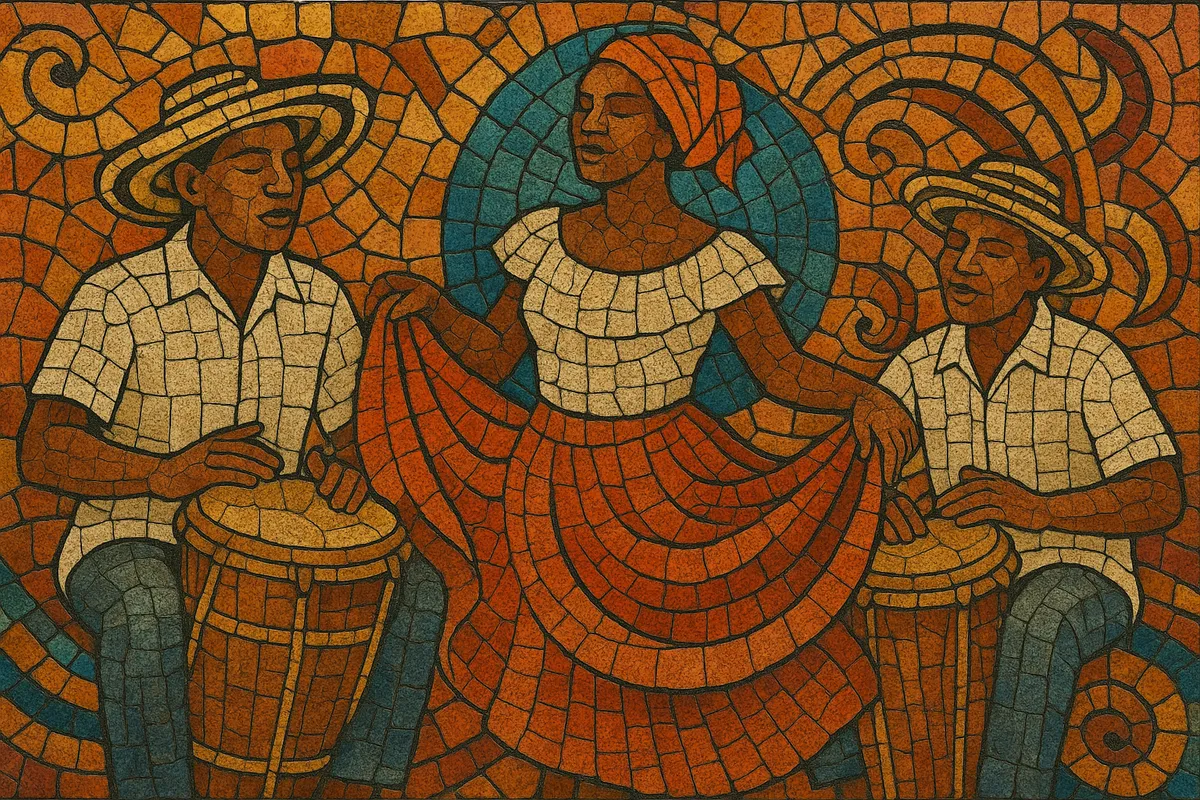Bullerengue is an Afro‑Colombian sung‑dance genre from Colombia’s Caribbean coast, especially in communities of Bolívar, Atlántico, Córdoba, and the Palenque de San Basilio area. It is traditionally led by women cantadoras who sing in call‑and‑response over hand‑played drums and maracas, with dancers marking a circular, processional movement.
Its core sound comes from two hand drums (a deep bass drum and a higher, improvising drum) plus maracas, locking into a driving 2/4 groove with cross‑rhythmic accents. Melodies are direct and powerful, often modal, and lyrics celebrate community, ancestry, daily life, and resistance. Principal variants include bullerengue sentao (slower, stately) and bullerengue chalupa (faster, more propulsive).
Historically part of the wider “cumbia complex,” bullerengue preserves a matrifocal, ceremonial performance ethos while continuing to evolve through contemporary ensembles and urban stages.
Bullerengue emerged during the colonial period among Afro‑descendant and Indigenous communities along Colombia’s Caribbean littoral. Centered in places like Palenque de San Basilio and riverine towns of Bolívar and Córdoba, it developed as a matrifocal practice in which women (cantadoras) led singing and social ritual. The ensemble—two hand drums and maracas—supports circular, processional dancing with call‑and‑response vocals that encode memory, identity, and communal values.
Scholars often frame bullerengue within the broader cumbia complex, a constellation of related coastal rhythms sharing lineage in African drumming, Indigenous flutes/percussion, and Iberian song. Within bullerengue itself, regional variants crystallized: bullerengue sentao favors a dignified tempo and grounded dance posture, while bullerengue chalupa accelerates the groove and foregrounds kinetic response. These variants underscore the music’s ritual and social functions—festivity, courtship, and rites of passage—especially among women.
Urbanization and the rise of commercial dance bands (porro, orchestral cumbia) drew attention away from rural bullerengue ensembles mid‑century. Yet communities sustained the practice in local fiestas and patron‑saint cycles. Cultural recognition of Palenque’s heritage and the leadership of master cantadoras/ensembles helped stabilize transmission, with festivals and regional competitions giving the tradition renewed visibility.
From the 1990s onward, artists such as Petrona Martínez and Ceferina Banquez catalyzed a renaissance, winning national prizes and touring abroad. Recordings and documentary work positioned bullerengue as a cornerstone of Afro‑Colombian identity. Contemporary bands now fuse its drumming and call‑and‑response with global styles, inspiring neofolklore projects and informing the rhythmic vocabulary of coastal genres like champeta.
The dance typically unfolds in a circle with measured footwork and torso expressivity rather than lifts or turns. Women’s leadership remains central: the lead singer cues responses, improvises verses, and signals dynamic changes to the drums and maracas, preserving a deeply social art that joins music, movement, language, and memory.


